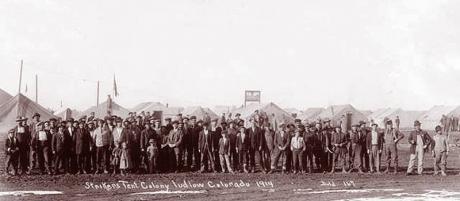WHAT IS A “CONSENSUS” AND WHY IS IT A SCAM?
By AL Whitney © copyround 2015
Permission is granted for redistribution if linked to original and AntiCorruption Society.com is acknowledged.

It is time to look at one of the “CONTROLLER’S” favored method of manipulating the public today: The Delphi Technique! The Delphi Technique is the creation of the nasty private think-tank founded by the Rockefellers, known as the RAND CORPORATION. [1]
Key in identifying the usage of the Delphi Technique is the word
CONSENSUS
RAND has spread this deceptive strategy across the planet. It is currently and commonly used in academics, government institutions, private regional planning commissions, the military and non-profit organizations.
Two important and notable examples of the use of the Delphi Technique are:

In fact, the National Academy of Sciences boasts their usage of the Delphi Technique in creating mumbo jumbo scientific reports by openly labeling these reports as: Expert Consensus Report. [See:
Expert Consensus Reports are Scientific Mumbo-Jumbo]
Most community organizers and so-called government agency employees have been trained in the RAND Corporation’s Delphi Technique. It is taught to facilitators as a method of getting a group of people to believe they have made a group decision. If you have ever attended a meeting whereas those in charge of the meeting break the attendees into working groups or break-out sessions, who are then “tasked” to discuss a topic and bring the results back to the larger group, you have been Delphied! If when the meeting is over you are not scratching your head as to what just transpired, you are indeed a rare exception. The confusion experienced immediately post-meeting is an absolute sure sign that you were Delphied! The facilitators of the gathering generally proceed to report the outcome of this confusion as if a “consensus” of opinion had been reached by the participants. It is unlikely that their version of a “consensus” represents your opinions, thoughts, ideas or concerns. It is far more likely that their version of a “consensus” represents the goal of the facilitators who initiated the meeting in the first place. The outcome was predetermined. Your job was to sign in, fill a chair and allow them to cite you (either individually or as a group) as a supporter of their self-serving goal or agenda.
In fact, many times the goals of these organizers are associated with terms and conditions of grants that they have already signed contracts for. This is an extremely important point to remember as you think about this commonly used strategy of falsely attaining public approval.
My conclusion are a result of personally having been Delphied many times, which is how it became so obvious to me that this technique is being taught in all of our so-called institutions. I was Delphied at the following events:
- Medical School faculty retreat
- Regional planning commission public meetings
- Local land-use non-profit seeking public participation
- City government “visioning” workshops for the public (2 times)
- Non-profit Executive Director engaged in annual conference planning
- Independent organizer trying to get a large number of people to address a shared concern
The same feeling of post-meeting confusion followed all of these events. The post-meeting conversations that took place by attendees in the parking lot were all the same. We asked each other “What the bleep was all that about?” We all felt that the organizers stated purpose – that enticed us to the meeting in the first place – was just a pretense for an altogether different undisclosed agenda. And we were right.
While the general public remains unaware of these meetings and strategies, the outcomes will most likely directly impact their lives. Often the names of the participants (or participating groups) are then assigned to the outcome (as in the case of the IPCC) and used to enhance the initiating organization’s credibility and help sell their goal to others! Many times these goals become part of public policies that are implemented – again without the knowledge or consent of the general population.
According to the Merriam Webster Dictionary, a consensus is a “general agreement”. Specifically it means that a group of two or more people have consented to an idea, project, or plan. While one should be able to assume that more than 50% of those that participating in a Delphi program have fully understood the topic and have agreed to support a position or plan – that is not generally the case when the Delphi Technique is implemented.
It is easy to identify the inherent manipulation in the Delphi technique when you break the process down:
Step One
A single individual, a group of people, an organization or a corporate government agency establishes a goal – like the initiation of a new policy or the creation of a useful report.
Step Two
The initiators invite people (with or without expertise or knowledge of the issue) to a gathering for their input (like a think tank). The invitees generally include a very small group of experts and many non-experts who can be easily persuaded to support the ‘goal’.
Example: The Intergovernmental Panel on Climate Change included many non-scientists. I was introduced to one of them. While he was a nice fellow, he knew nothing about climatology . . . he was the owner of a solar panel company.
Step Three
The assigned moderators or facilitators define the goal to the group, generally in very broad terms.
Step Four
The facilitators seek group input
a) they break the group into smaller groups or topics for discussion lead by other facilitators
OR
b) they administer surveys, polls or questionnaires to the group (using carefully ‘worded’ and limited questions).
Have you ever noticed that if you can control the questions, you control the dialogue? Questions like – should we even being considering this issue – are not permitted.
Step Five
The facilitators cherry-pick the results (input), format them, and present them as a group decision calling it a “consensus”. Thus – the results ALWAYS support the predetermined goal.
Step Six
The names (or number) of the participants or participating organizations are attached to the final report giving it the appearance of credibility; in spite of the fact that the participants are rarely allowed to review and/or approve of the final outcome.
Example: The wonderful documentary
The Great Global Warming Swindle includes the testimony of a scientist who participated in the IPCC’s first consensus meeting and was so incensed by the the resulting report on Climate Change that he sued to have his name removed.
This Delphic Technique method of policy making can affect the lives of vast numbers of people – without their knowledge or approval. And, those responsible can escape accountability via a plausible deniability factor that has been intentionally built into the Delphi Technique.
By controlling the following factors, a group can be hand-picked and manipulated into seemingly supporting policies they don’t agree with or reports that they know to be blatantly false:
- facilitator
- invitees
- questionnaires, polls or surveys
- discussion
- final report
All “consensus” results – including consensus scientific reports – should be presumed false . . . based on the usage of the deceptive consensus process itself.
To help educate unsuspecting victims of the Delphi Technique,
this brochure can be printed on card stock and trimmed to make 3 brochures per each 8 1/2 X 11 page. Sharing it with other attendees at Delphi events can help undermine this nasty and dishonest strategy of group manipulation.
______________________________________________
[1] Former RAND insider Alex Abella exposes this diabolic ‘think-tank’
https://www.youtube.com/watch?v=mYrkLwLTrIg
[2]
Insider admits that environmental orgs never reviewed CO2 global warming theory
For Complete Source and Articles of Major Concern Please Visit The AntiCorruption Society at this link:
http://anticorruptionsociety.com/2015/03/28/the-delphi-perception-management-technique/
This article explains how it was done. The Delphi Perception has far reaching arms into the heart of each community. Knowledge from the past helps us determine how best to face the future. Here also is a link to how we can all help disarm the delphi technique.
http://anticorruptionsociety.com/2015/03/30/we-can-all-help-disarm-the-delphi-technique/


 In
a paper entitled, "Suicides and Homicides in Patients Taking Paxil,
Prozac, and Zoloft: Why They Keep Happening - And Why They Will
Continue," Dr Jay Cohen points out that, as soon SSRI's arrived on the
market in the late 1980s, reports of sudden, unexpected suicides and
homicides by patients taking the drugs began to come in.
In
a paper entitled, "Suicides and Homicides in Patients Taking Paxil,
Prozac, and Zoloft: Why They Keep Happening - And Why They Will
Continue," Dr Jay Cohen points out that, as soon SSRI's arrived on the
market in the late 1980s, reports of sudden, unexpected suicides and
homicides by patients taking the drugs began to come in.
